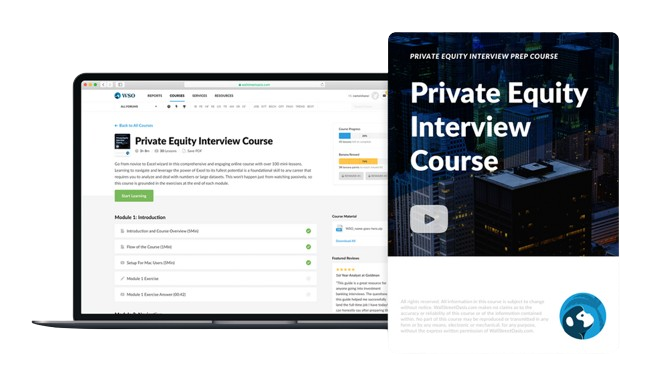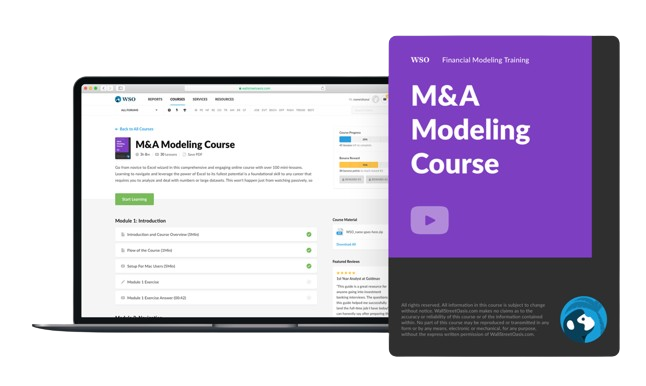Special Purpose Acquisition Company (SPAC)
A company without business operations used to take companies through an Initial Public Offering (IPO)
What Is A Special Acquisition Company (SPAC)?
A Special Purpose Acquisition Company (SPAC) is a company without business operations used to take companies through an Initial Public Offering (IPO).

They are sometimes known as "blank check firms" or "blank check company," and have been operating for decades but have seen a surge in popularity in recent years.
In 2020 247 SPACs were established and $80 billion was invested. In 2021 613 SPAC IPOs were recorded. Contrastingly, only 59 were launched in 2019.
Investors or sponsors with experience in a particular industry or business area typically organize these to seek acquisitions in that sector.
The founders of a Special Purpose Acquisition Company may have at least one acquisition target in mind when forming the company, but they may not reveal that intention in order to avoid huge disclosures during the IPO process.
This is why they're known as "blank check businesses." Investors in initial public offerings often have no prior knowledge of the firm in which they will be investing. Before selling shares to the general public, they look for underwriters and institutional investors.
They invest the money they raise in an IPO in an interest-bearing trust account. If the company is liquidated, these monies can only be used to complete a purchase or to repay money to investors.
They usually have two years to execute a transaction before it is liquidated. In some situations, a portion of the trust's interest can be used to fund its operations. They are normally listed on one of the main stock markets once it has been acquired.
Key Takeaways
-
A Special Purpose Acquisition Company (SPAC) is a firm created for the sole purpose of raising capital through an IPO to acquire or merge with another business.
-
SPAC founders, typically industry experts, create these companies without revealing their acquisition targets to simplify IPO disclosures.
-
SPACs provide an efficient route to public markets, allowing for forecasts, but come with risks, including volatile stock prices, potential merger target failures leading to liquidation, and regulatory uncertainties.
-
SPAC performance has seen fluctuations, with their market share dropping to around 10% in 2022. Prominent SPAC-listed companies include DraftKings, Virgin Galactic, QuantumScape, and Opendoor Technologies.
Understanding Special Purpose Acquisition Company (SPAC)
Companies that want to go public might use SPACs to make the process easier. They are founded by a sponsor—which might be anybody from a private equity firm to a former corporate executive—who collaborates with an underwriter to take the blank-check business public.
The SPAC raises money through a public stock offering and trades on an exchange in order to select a target firm with whom to combine. When a merger is completed, the SPAC inherits the target company's identity and ticker.
The capacity to talk about the future and make forecasts, which is restricted in the typical IPO process, is one of the primary benefits for target companies—and, effectively, SPACs. This is a particularly appealing prospect for SPACs looking for disruptors and innovators.
The absence of the need for roadshows (a crucial element of the traditional IPO process), which normally consist of many meetings with institutional investors and are aimed at acquiring cash, is also of importance to target firms.
SPACs simplify matching with a target firm for sponsors. Provides direct access to emerging firms for private investors, which has previously been reserved for larger institutions and hedge funds. Also offers affordability for investors.
Investors may usually acquire one unit of a blank-check corporation for $10, which includes a common share and a portion of a warrant (which gives the right to buy more shares at a specified price in the future).
The SPAC's cash is invested in Treasury bills until it finds a target firm, at which point it is spent to complete the merger process. Fee arrangements vary, but the sponsor often holds a 20% ownership position.
After banking fees, the cost to public investors at the time of the SPAC's IPO, and/or a merger with a target firm, the expenses connected with SPACs may sometimes be substantially greater than standard IPOs.
Example Of SPACs
Special Purpose Acquisition Companies (SPACs) have garnered immense attention for their unique approach to taking companies public.
These investment vehicles have facilitated the rapid listing of innovative and high-growth companies, offering them an expedited path to accessing public capital markets.
Here, we highlight some high-profile SPACs and their notable mergers, shedding light on the impact of this investment trend.
- Virgin Galactic Holdings Inc. (NYSE: SPCE) made headlines when it went public through a merger with Social Capital Hedosophia Holdings Corp. in 2019. This strategic move allowed Virgin Galactic, the brainchild of Sir Richard Branson and a pioneer in space tourism, to access public markets and secure the necessary capital to fund its ambitious space exploration plans.
- DraftKings Inc. (NASDAQ: DKNG), a leading sports betting and online gaming company, merged with Diamond Eagle Acquisition Corp., a SPAC, in 2020. This transformative merger provided DraftKings with the financial resources required to expand its operations and venture into new markets, solidifying its position as a prominent player in the industry.
Beyond these well-known examples, a slew of other SPACs has entered the arena with the aim of identifying potential merger opportunities:
- AltC Acquisition Corp. (ALCC) is actively exploring merger prospects, indicative of the continued interest in SPACs as a means of going public.
- Digital World Acquisition Corp. (DWAC) gained substantial attention for its high-profile merger with Trump Media & Technology Group, underscoring the versatility and visibility of SPACs in the market.
- Hennessy Capital Investment Corp. (HCVI) is among the SPACs actively seeking merger opportunities, contributing to the dynamism of this investment landscape.
- M3-Brigade Acquisition III Corp. (MBSC) is in the midst of its journey, actively identifying potential merger targets and contributing to the dynamic landscape of SPACs.
- Kensington Capital Acquisition Corp. (KCGI) engaged in merger discussions or actively pursuing opportunities, KCGI showcases how SPACs continue to reshape the financial landscape.
These examples underscore the dynamic nature of SPACs and their pivotal role in modern finance.
With the potential to unlock innovation, provide swift access to public markets, and disrupt industries, SPACs continue to be a compelling force in shaping the future of public listings and investment opportunities.
What Are The Advantages Of A SPAC?
Special Purpose Acquisition Companies (SPACs) offer several advantages for both target companies and investors.
For target companies
1. Quick Access to Public Markets
SPACs provide a quicker route to accessing public capital markets compared to the traditional initial public offering (IPO) process. This streamlined approach can save time and reduce costs, allowing companies to raise funds and become publicly traded entities more efficiently.
2. Forward-Looking Projections
SPAC mergers allow target companies to provide forward-looking projections and forecasts during the negotiation process.
This is particularly attractive for innovative startups and firms in emerging industries where the ability to communicate future growth potential can be a significant advantage.
For investors
1. Flexibility
SPAC investors enjoy flexibility in their investment decisions. They can participate in the SPAC's initial offering and have the option to redeem their shares for a pro-rata portion of the trust account if they disagree with the proposed merger target.
This feature provides investors with a level of control and risk mitigation.
2. Profit Potential
Investors can potentially profit from the appreciation of the SPAC's stock price if the merger is successful.
The ability to invest in companies with growth potential before they go public through traditional means makes SPACs an intriguing investment vehicle for those seeking opportunities in the public markets.
Overall, SPACs offer a unique and flexible way for companies to access capital and for investors to participate in the growth of innovative businesses.
What Are the Risks of a SPAC?
Investing in Special Purpose Acquisition Companies (SPACs) presents unique opportunities but also comes with specific risks that investors should be aware of. Here are some key risks associated with SPAC investments:
- Volatility
SPACs can experience significant price fluctuations due to the hype surrounding sponsors, potential mergers, or celebrity endorsements. Share prices may skyrocket only to later plummet, sometimes below the initial public offering (IPO) price.
- Lack of Fundamentals
Until a merger is completed, SPACs essentially aggregate cash with no underlying business operations. This lack of fundamentals makes it challenging to evaluate their true value or potential.
Investors need to conduct thorough due diligence on both the SPAC sponsor and the target industry. Poorly chosen targets or sponsor mismanagement can lead to losses.
- Failed Mergers
SPACs face the risk of not identifying a suitable merger target within the specified timeframe, typically two years. In such cases, the SPAC must liquidate, and investors receive a pro-rata portion of the remaining funds, potentially resulting in losses.
- Market Crowding
The growing number of SPACs entering the market can lead to increased competition for suitable merger targets, potentially driving up acquisition prices and reducing the quality of targets.
- Regulatory Changes
The regulatory environment for SPACs is subject to change. The Securities and Exchange Commission (SEC) has heightened its scrutiny of SPACs due to increased speculative trading activity.
Recent SEC proposals aim to enhance investor protection, potentially impacting SPAC sponsors' ability to make long-term forecasts and requiring increased transaction disclosures.
- Warrant Treatment
The SEC's consideration of treating warrants as liabilities instead of equities has prompted some SPACs to restate their financial accounts. Changes in warrant accounting can affect SPAC valuations and investor confidence.
Another risk to consider is their inability to locate a merger target, which would force it to liquidate. They have two years to complete a merger; if they don't, they collapse, and investors receive a pro-rata part of its total worth.
This, together with the impossibility of new Special Purpose Acquisition Companies entering a crowded market, is a growing issue.
Finally, the regulatory environment may continue to be a source of difficulty in the future. The Securities and Exchange Commission (SEC) has increased its emphasis on Special Purpose Acquisition Companies as speculative trading activity has increased over the past year.
- In an April 2021 report, the SEC suggested that warrants will be treated differently as liabilities rather than equities. This alone prompted over 100 of them to restate previous financial accounts, putting a halt to a fresh issue.
- The SEC announced new proposed advice for them in March 2022, aiming at improving investor safety. Transparency and accountability are at the heart of the plans.
Under the proposed plan, Special Purpose Acquisition Company sponsors would be required to provide extra transaction disclosures; underwriters would face higher responsibility; special purpose acquisition companies' capacity to make long-term forecasts about future performance would be limited.
Before the advent of this plan, the Special Purpose Acquisition Company market was deteriorating to some extent.
Measuring the performance of a SPAC
In addition to hazards, the performance of Special Purpose Acquisition Companies is a major concern for investors.
As previously stated, issuance has already seen a boom-bust cycle. As you can see in the table below, they grew in popularity in 2020, and given the flurry of issuance, so did their proportion of overall IPO activity (both in terms of total transaction value and number of businesses).
Special Purpose Acquisition Company value amounted to half of the entire IPO value in the United States by February 2021, when activity peaked.
Their market share has dropped to roughly 10% as of April 2022. The performance of the company has mainly mirrored that of the issuing activities.
Reasons for Growth:
- Several speculative pockets of the market gained traction in the second half of 2020 for various reasons.
- Ample liquidity (thanks to both fiscal and monetary aid) in the aftermath of the pandemic, increased interest in day trading, and an incredibly quick recovery in stocks from the S&P 500's low on March 23rd, 2020, were some of the reasons.
Performance Assessment:
- Special Purpose Acquisition Companies across the board—as assessed by the ISPAC Index—had doubled in value by February 2021, based on performance since the middle of 2020 (when many frothy parts of the market began to surge).
- The pinnacle in the excitement, however, appears to be behind us, as gains for the ISPAC Index have entirely faded and turned into substantial drops, as seen in the next figure.
- The performance of firms in the De-SPAC Index has been much worse, with their value falling by 75% from its high in 2021 to early May 2022.
Given the large number of firms that have gone the traditional way, it's a little more difficult to track traditional IPO performance over time.
The Renaissance IPO Index, which dates back to 2009 and gauges the performance of younger IPOs, is another option.
The index has risen almost 250% since its inception, which is rather outstanding. However, as indicated by strong drawdowns in 2015-2016 (-36%), 2020 (-38%), 2021 (-29%), and 2022 (-29%), the run has not been without turbulence (-45%).
Rise of Special Purpose Acquisition Company (SPAC)
They have grown in popularity in recent years, despite the fact that new accounting standards announced by the Securities and Exchange Commission in April 2021 led new Special Purpose Acquisition Company filings to drop in the second quarter of 2021 from record highs in the first quarter.
These IPOs raised $13.6 billion in 2019, more than four times their 2016 total of $3.5 billion. On the other hand, they took off in 2020 and 2021, raising as much as $83.4 billion in 2020 and $162.5 billion in 2021. They have raised $9.6 billion as of March 13, 2022.
Special Purpose Acquisition Companies attracted big-name underwriters like Goldman Sachs, Credit Suisse, and Deutsche Bank, as well as retired or semi-retired senior executives during this boom time.
In March 2021, the SEC issued an "Investor Alert" because so many celebrities, including artists and professional athletes, were associated with them.
It advised investors not to base their investment in these companies' decisions primarily on celebrity engagement.
Special Purpose Acquisition Company (SPAC) FAQs

To save money and time. Taking a company public through an initial public offering is a lengthy process that requires complicated regulatory filings and months of negotiations with underwriters and regulators.
This can hinder a company's ambitions to go public, particularly during times of increased uncertainty (such as the pandemic years of 2020 and 2021), when the danger of investors rejecting its IPO is significantly higher.
In contrast, if a firm merges or is bought by a special purpose acquisition company, which is an organization that exists only for the purpose of completing such an acquisition, it can become public within months.
In comparison to another bidder, such as a private equity firm, who may drive a hard bargain, the owners of a target company may be in a stronger position to negotiate a fair price from a SPAC that has a restricted time period for executing an acquisition.
Digital sports entertainment and gambling firm DraftKings, aerospace and space travel company Virgin Galactic, energy storage inventor QuantumScape, and real estate platform Opendoor Technologies are just a few of the well-known companies that have been publicly listed after merging with a Special Purpose Acquisition Company.
They must combine with another firm and conclude a contract within a certain time. This period normally lasts between 18 and 24 months.
If they fail to combine within the time limit, it liquidates and returns all cash to investors.
A Special Purpose Acquisition Company warrant entitles you to buy common shares at a certain price. Let's assume you purchase a warrant for $12 at a 1:1 ratio.
As a result, one warrant is equivalent to one share. You can exercise your right to acquire the stock for $12 if the stock price rises to $20 following the merger. This results in an immediate gain of $8.
Make sure you read the prospectus of the Special Purpose Acquisition Company to learn about your rights as an investor.
The ideal approach in this case, according to history, is to acquire Special Purpose Acquisition Companies after they've disclosed a merger target but before the merger is completed.
Investing in a pre-merger Special Purpose Acquisition Company when you don't know what stock you're buying is like driving in dense fog or a nasty snowfall; you may have a general sense of where you're heading, but you can't be certain.
And it's possible that you'll wind up with poor outcomes.
Shares of common stock immediately convert to the new entity when a merger is completed. Investors also have the choice of:
1. Make use of their warrants
2. Make a withdrawal





or Want to Sign up with your social account?